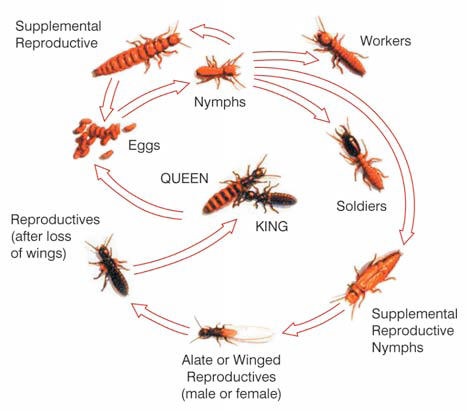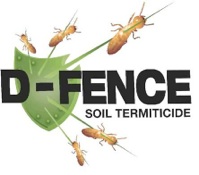Termite Prevention
Many people think of termites as aggressive destroyers of homes and property, but about 90 percent of termite species are beneficial. They consume, digest and make use of dead and dying vegetation. Some species also eat the waste of herbivores, which can contain undigested cellulose. In some places, termites are the most important factor in breaking down cellulose. Without them, dead trees and herbivore waste wouldn't decompose normally -- they would gradually pile up, making it harder for animals to migrate and find food.
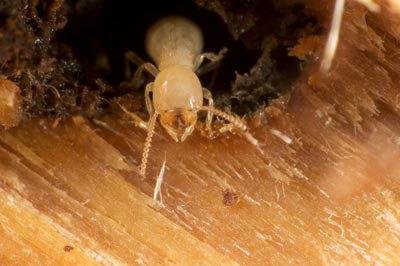
Termites eat dead wood. Without them, dead trees and
brush wouldn't decompose normally.
Many homes and other human structures fit the bill for termite food because they're made of dead wood. Termites can't differentiate between the inside of a dead tree and the walls of a person's house. In some parts of the world, termite attacks on homes are so prevalent that people have adapted, building their homes on stilts lined with termite deterrents, like pieces of metal and pie pans.
Formosan Termites
Formosan termites were accidentally introduced to the United States shortly after World War II. In some parts of the country, they have attained notoriety that compares to Africanized bees. Formosan termite colonies are bigger than native colonies -- Formosan queens lay thousands of eggs every day, and a colony can include millions of workers. The invasive species is more aggressive than their native counterparts, and there are more soldiers in each colony. In addition, Formosan termites will test termite barriers in an attempt to find their way through, much like the velociraptors in "Jurassic Park."
Fortunately, there's a lot people can do to prevent termite infestation. The process begins even before a builder starts to work on a house. Professional pest-control companies can treat the ground at the building site with a substance that kills or repels termites. This treatment usually offers protection against termites for at least five years. Builders can also construct houses in a manner that deters termites from entering. This basically involves making sure wood doesn't come into direct contact with soil. Other techniques include placing a moisture barrier under basements to help keep the area dry and removing piles of soil from under porches. A termite inspection is usually part of the home-buying process, which reduces your likelihood of buying a home that is already infested.
These steps don't guarantee that a home will never experience an infestation. Next, we'll explore how to detect the presence of termites.
Termite Infestations
Termite treatments and good building methods can't completely prevent a termite infestation. Homeowners in termite-prone areas have to keep an eye out for signs of the wood-eating insects. Often, the first sign of infestation is the emergence of a swarm. If you find alates inside your home, they probably came in through your walls. This is a sure sign that there are termites in your home. However, if you find a swarm outside, particularly if it's coming from a stump or a tree, the infestation may not have reached the building. Alates can look a lot like ants -- here's how to tell the difference:
-
•Ants have a narrow waist. Termites do not.
-
•Ants' front wings are significantly longer than their back wings. Termites' wings are the same length, and they can fold straight back down the length of the termite's body.
-
•Ants' antennae are bent. Termites' antennae do not bend, and they look like a very fine string of pearls.
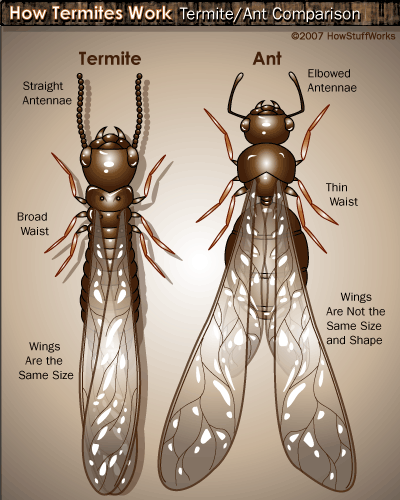
Here are some other common signs of home termite infestation:
-
•Wings: Alates shed their wings just after swarming. When the alates are inside your home, they typically shed their wings on windowsills or near lights.
-
•Decayed wood: Termite damage generally follows the grain of the wood. Termites also line the damaged wood with soil. Damage from other sources, like water or fungus, doesn't follow this pattern.
-
•Shelter tubes: Termites will dig tubes up cinderblocks, concrete, brick and other surfaces in order to get to wood. Sometimes, if you break the tubes open, you will see live termite workers inside.
Shed termite wings are sure signs of an infestation.
Termite damage happens from the inside out, so it can be hard to detect an infestation. If the wood in your house sounds dull when hit with a hammer, there may be termite activity inside. You can also use a screwdriver or ice pick to carefully probe anywhere you believe termites might be hiding. This can reveal damaged wood and the termites themselves.
Treating a termite infestation requires a professional exterminator. Next, we'll take a look at the most common methods used to get rid of termites.
Exterminating Termites
If you discover an infestation of fleas or roaches in your home, you can often take care of it with over-the-counter products. This is not the case with a termite infestation. Although some of the chemicals that kill fleas and roaches will also kill termites, applying them to a termite infestation requires special tools and training.
When an exterminator comes to your home, he will first verify that termites are the culprit. Other insects, including carpenter bees and some species of ants, can also damage wood homes. Some people may also mistake water damage for termite damage. An exterminator will use tools like long probes, heat sensors, sound sensors, infrared cameras, hammers and drills to look for termite damage.
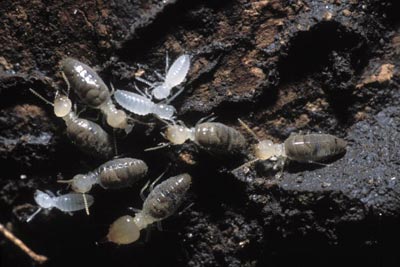
Termites can devour the wood in a home,
but it takes them years to do it.
If the exterminator finds conclusive signs of termites, he may use one of three treatment methods:
-
•Baits are wood, cardboard or other cellulose-containing products soaked in a pesticide. Termites eat the baits and carry particles back to their nests, poisoning the rest of the colony.
-
•Repellents discourage termites from entering a particular area. These can help keep termites from colonizing a new site in your home.
-
•Termaticides kill the termites. Sometimes, exterminators have to pump hundreds of gallons of termaticide into termite nests in an attempt to treat the infestation. Another tactic involves applying an insecticide around the entire perimeter of the home and at every possible termite entry point. This keeps termites from getting inside, and any that are already inside usually die of dehydration.
Fortunately, it takes years for termites to do significant damage to a home. So if you discover an infestation on your property, you have time to get estimates from several exterminators. Before making a decision, find out what kind of warranty or guarantee the exterminator offers and whether you will have to pay for further treatments if the termites reappear. It's also a good idea to contact your local cooperative extension office to learn how your state governs termite control. That way, you can make sure that the exterminator you choose is properly licensed and qualified.
